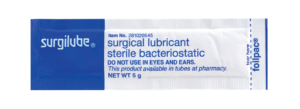Strategies to Improve Infection Prevention and Control
Infection prevention and control is a top priority for acute care hospitals, ambulatory surgical centers, outpatient faculties, and long-term care facilities across the country.
What is Infection Prevention and Control?
The CDC refers to infection prevention and control as the practice of preventing or stopping the spread of infections in a healthcare setting.
Having a proper infection prevention and control program in place can greatly reduce healthcare-associated infection (HAI) rates. HAIs are infections people get while they are receiving medical care for another condition, with more than half of all HAIs considered preventable through proper infection control procedures.
What are the 4 most common HAIs?
- Catheter-associated urinary tract infections (CAUTI)
- Surgical site infections (SSI)
- Central line-associated bloodstream infections (CLABSI)
- Ventilator-associated pneumonia (VAP)
Improving Infection Prevention and Control
Let’s take a look at a few strategies to improve infection prevention and control.
Hand hygiene
Proper handwashing is key to reducing healthcare-associated infections, with an estimated 20% – 40% of HAIs being attributed to cross-infection via the hands. All staff members and visitors should be required to wash their hands before drinking, eating, providing care, and between caring for patients.
Disinfect and keep surfaces clean
To help prevent the accidental transmission of infections, high-touch surfaces should be cleaned at least once a day, and staff should be trained on the proper use of cleaning and disinfecting products.

Appropriate personal protective equipment (PPE)
Proper PPE such as gowns, gloves, masks, and face shields, should be available for healthcare professionals to help prevent the spread of germs. Your infection prevention department should have detailed instructions on when to wear PPE and what type to use in certain situations, for example, when there will be contact with blood or other bodily fluids.
Consult a device’s instructions for use
Whether it is a booklet, brochure, poster, tag, pamphlet, circular, instruction book, direction sheet, or filler, the instructions for use for a medical device details important information such as indications for use, precautions, proper handling, storage conditions, and disposal needed to support your facility’s infection prevention and control program.
Avoid outdated supplies
While it may be tempting to use non-drug supplies past their expiration date, using such supplies can increase the risk of infection and contamination.
Take advantage of single-use products
Single-use medical devices are to be used one time, by one patient, during one procedure. Although single-use medical devices may seem like a more expensive option, they are usually more cost-effective in the long run and can prevent the spread of infection. Surgilube® offers several different sizes of single-use foilpacs® that provide flexibility while meeting today’s infection control demands.

Surgilube® Surgical Lubricant is the #1 surgical lubricant for medical professionals. The sterile, bacteriostatic properties can help reduce HAIs, including surgical site infections and CAUTI, while the water-based formula provides ease of insertion and patient comfort. If your facility is looking to improve your infection prevention and control, request a sample of Surgilube® today.